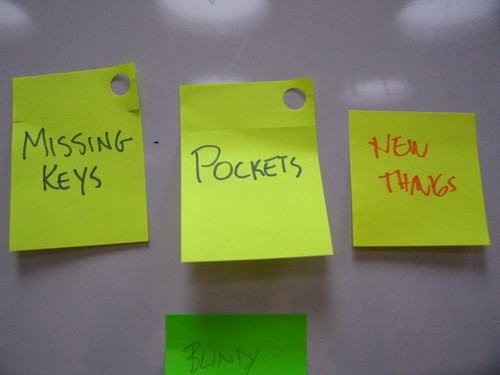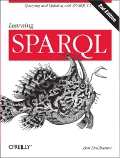
Dave McComb's book Semantics in Business Systems recommended John Saeed's Semantics as an "excellent introductory book on semantics in everyday life", so I found a cheap used copy and have been working my way through it. I'm sure that it's been used for both graduate and undergraduate courses, and it's not too difficult to follow so far. I especially like this part, which Saeed said he adapted from the work of Charles Morris:
syntax: the formal relation of signs to each other;
semantics: the relations of signs to the objects to which the signs are applicable;
pragmatics: the relation of signs to interpreters.
He goes on to say that "the whole science of language, consisting of the three parts mentioned, is called semiotic", but I was more interested in the way he put semantics in the larger context.
Printed and dictionary.com definitions of "semantics" typically come in pairs, with the first usually saying "the study of meaning" and the second more in line with Saeed's definition. The latter is sometimes identified as being specific to the fields of linguistics or semiotics.
I think that the linguistics/semiotics definition serves the semantic web better, because describing semantics as the relations of signs to the things they signify (and moving some of the "meaning" parts that take place in peoples' heads to the "pragmatics" category) helps us to focus on what the semantic web is the best at: providing an infrastructure to identify which signs (IDs in the form of URIs) refer to which objects (resources) so that people can use this infrastructure to create applications that work across the web.
Interpretation of the "meaning" of the signified resources is not necessarily a goal of these applications. While OWL can encode properties of concepts to let us do more reasoning with those concepts, attacking the feasibility of getting computers to Understand Meaning is a straw man argument that I'm tired of hearing from people who insist that the semantic web is an impractical idea. Standards and best practices that let applications track the relationship of identifiers to resources on a World Wide Web scale—who can argue with that?


Two experts*, to explicate meaning,
Wrote a book called The Meaning of Meaning.
The world still perplexed,
Three experts wrote next
The Meaning of "Meaning of Meaning".
*Ogden and Richards
Another excellent book in my humble opinion
http://www.semantic-web-book.org/page/Foundations_of_Semantic_Web_Technologies
Bob,
Nice post, and very well stated.
I think, Microsoft's use of deep zoom images as symbols (rather than exposing http identifiers) for the human interaction aspect of Linked Data Browsing / Exploration UIs may finally drive home the mercurial essence of what Linked Data is fundamentally about.
If you haven't done so already see:
1. http://www.youtube.com/watch?v=G29DBIEcIuQ -- Microsoft Pivot in front of Virtuoso's DBMS hosted Faceted Linked Data Navigation Engine
Kingsley
Bob, a good overview, thanks. Another good read (Ben Goertzel recommended this to me when we worked together): "Semantics, Primes and Universals" by Anna Wierzbicka.